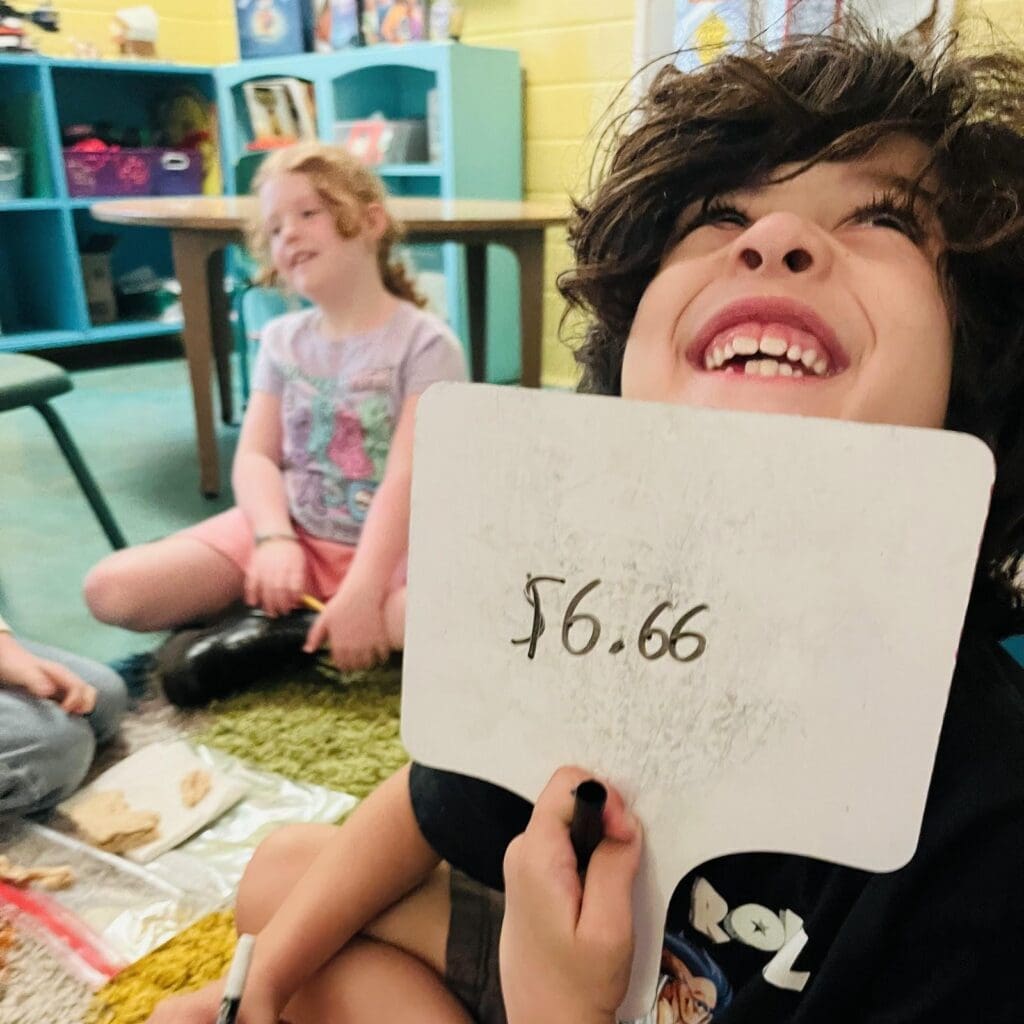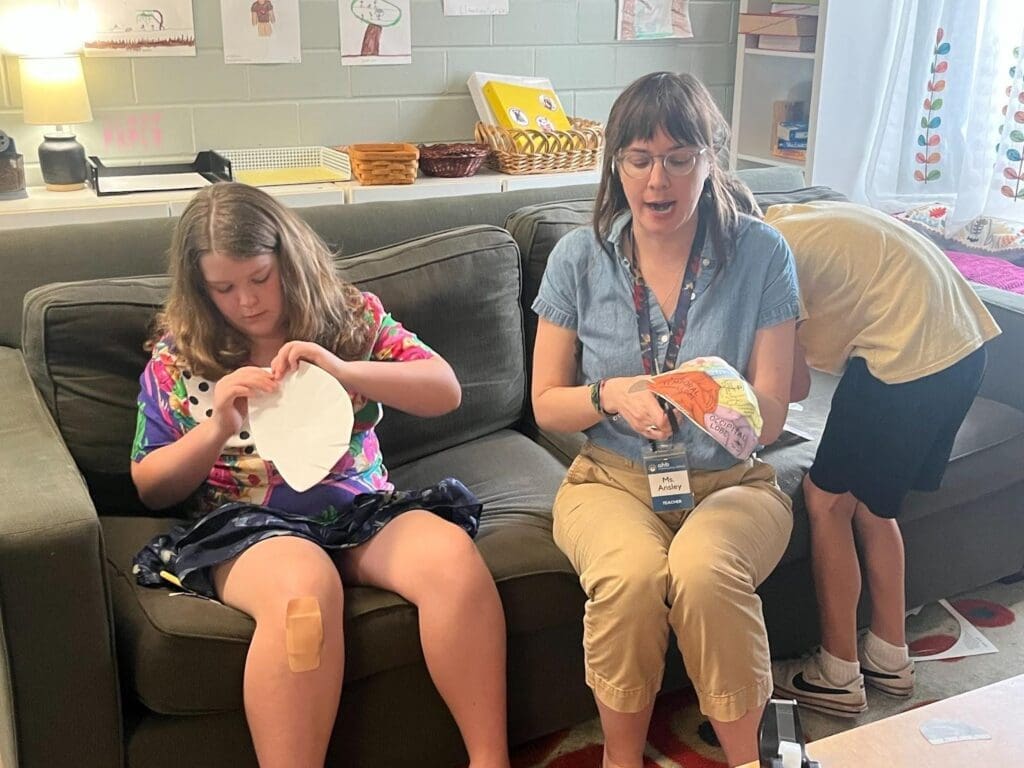Math –
Ms. Andrea’s math group worked on solving situations having to do with time. We created number lines to help us solve elapsed time problems and did another digital/analog mix and mingle to find new partners for the day (and for fun!) We discussed AM vs PM and completed different activities that take “about a minute” and “about an hour.” We made a human timeline and put ourselves in order based on the series of events in a daily schedule. After spending some more time figuring out situation problems involving elapsed time – they’re working hard and almost have it down! Finally on Thursday, we began reviewing proper measurement techniques and practiced using nonstandard units to measure things in the classroom.
| 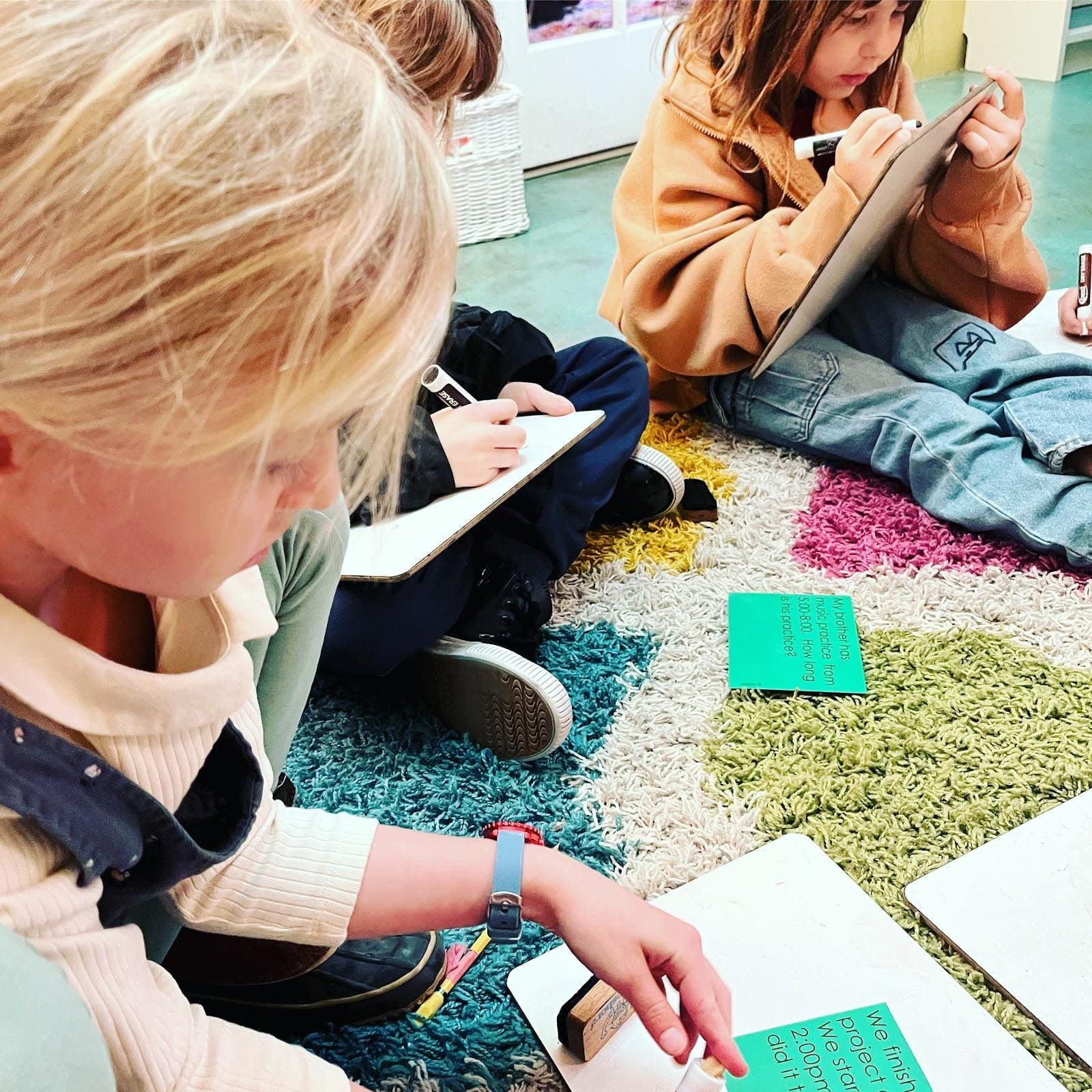
| 
|
|---|
Ms. Kelly’s math group practiced some division strategies- repeated subtraction (Using this method, the same number is subtracted repeatedly from another larger number until the remainder is zero.) and strip diagrams. Both good strategies to try if you forget your division facts! We continue with multiplication fluency every day when we finish our daily work. The crew is also finding 2 part word problems soooooo much easier with some extra practice!

| 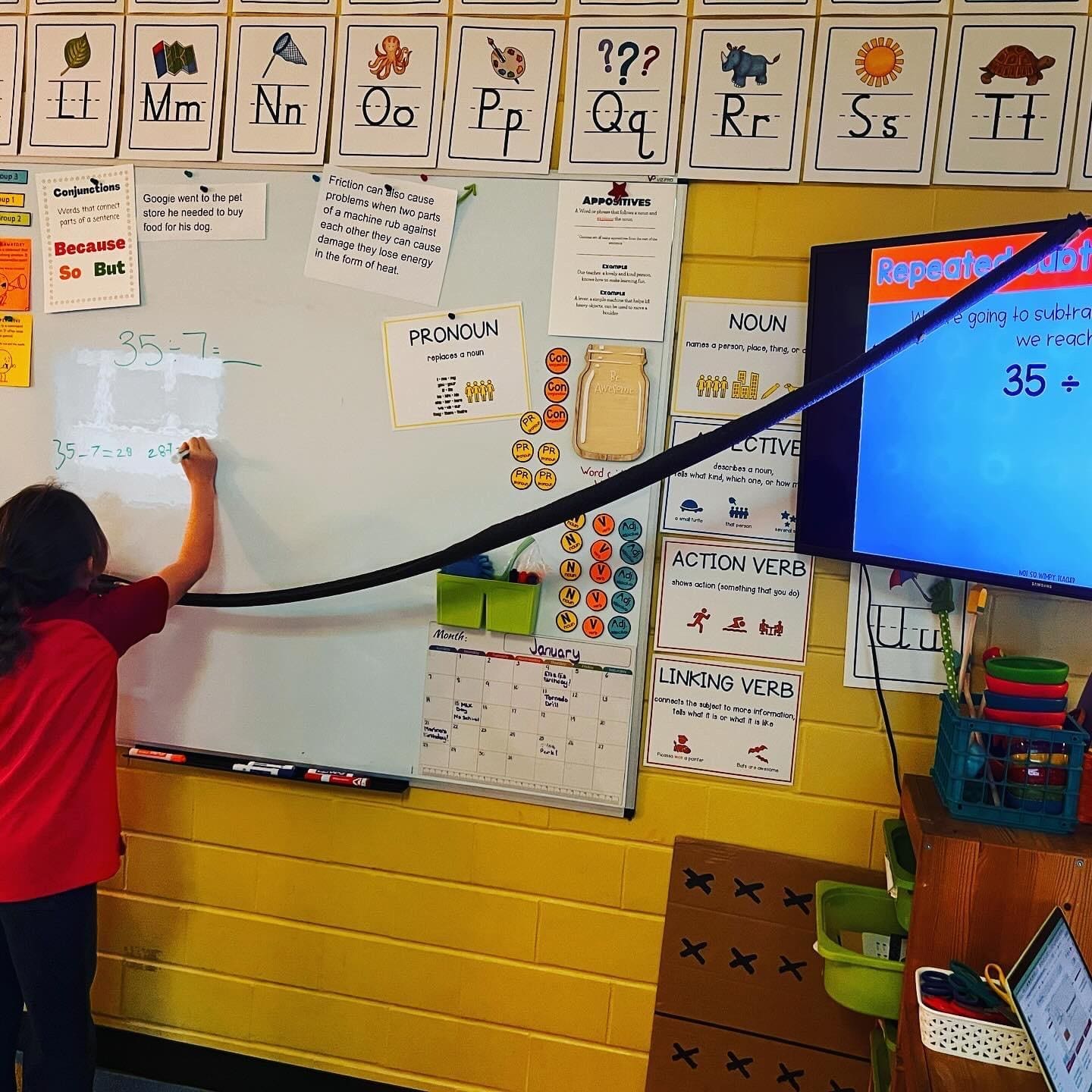
| 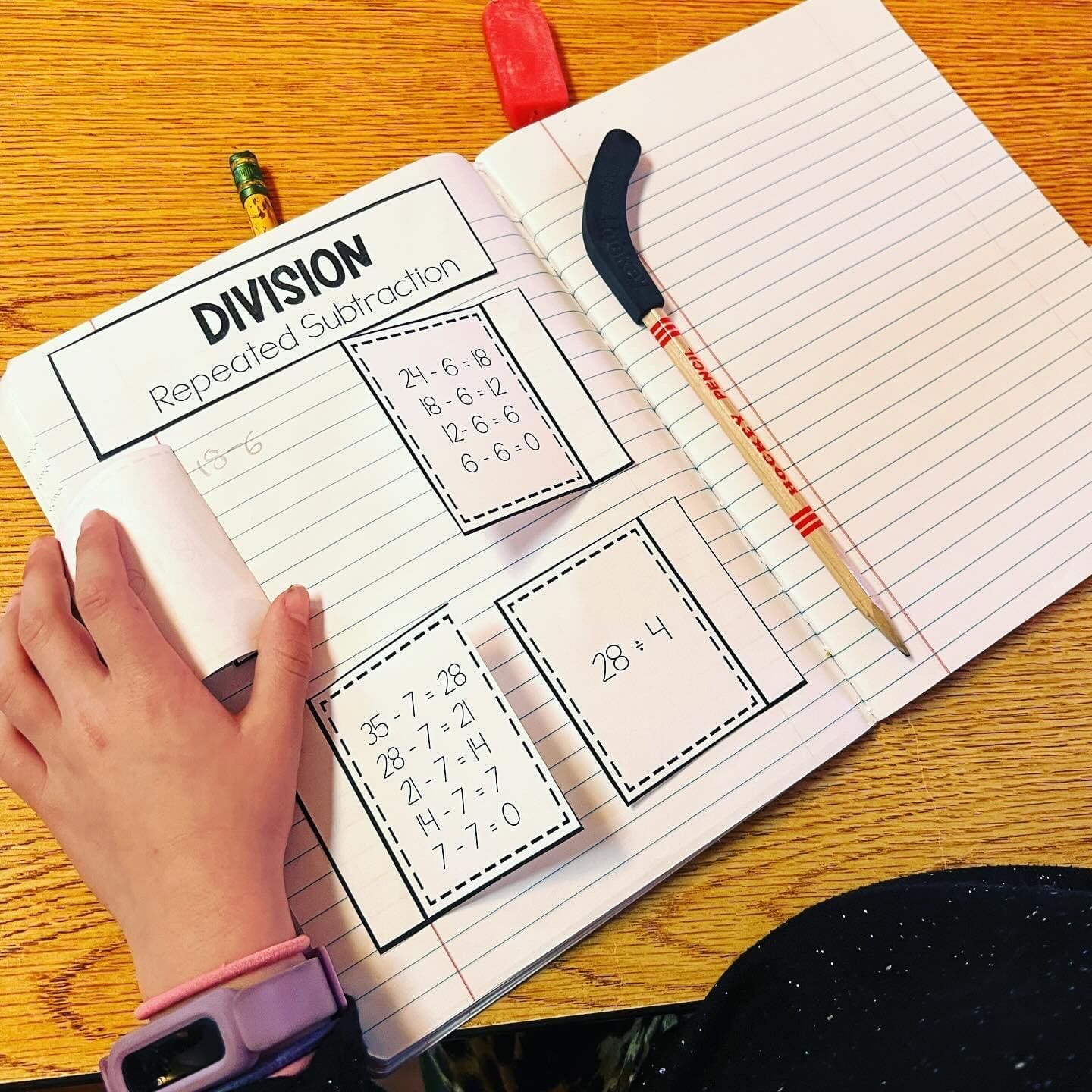
|
|---|
Literacy –
We had plenty of opportunities this rainy week to get cozy with our books! Book clubs are steadily charging ahead. During our independent rotation, the Betas pull out their “RETs” (reader engagement tools, aka reading journals) and reflect on the characters in their books, analyze figurative language passages and reflect on the progress of their books’ plots, amongst other things.
During reading time, the flip side of book clubs is word work. We practice spelling patterns and rules in many ways- this week we did word sorts, whiteboard dictation, syllabication (breaking up big words into smaller more manageable chunks rather than guessing or skipping) and reading texts with these patterns and rules.
In writing this week we have begun a new writing unit: Nonfiction! First up- what IS nonfiction and what are the special features that make it unique. After exploring together, each child perused their own nonfiction book, looking for the text features as well as finding and jotting down a couple of cool facts. We spent a little extra time practicing being Super Fact Finders while looking for and writing down interesting facts from nonfiction texts. On Wednesday, each child received a book or article full of information about an inventor. Our goal: to get familiar with the text and jot down some basics: Who, what, where and when. On Thursday we learned that great biographers ask lots of questions! We read some of our inventor biographies and wrote down questions we still had about our inventor. We are looking forward to getting the answers to these ponderings next week!

| 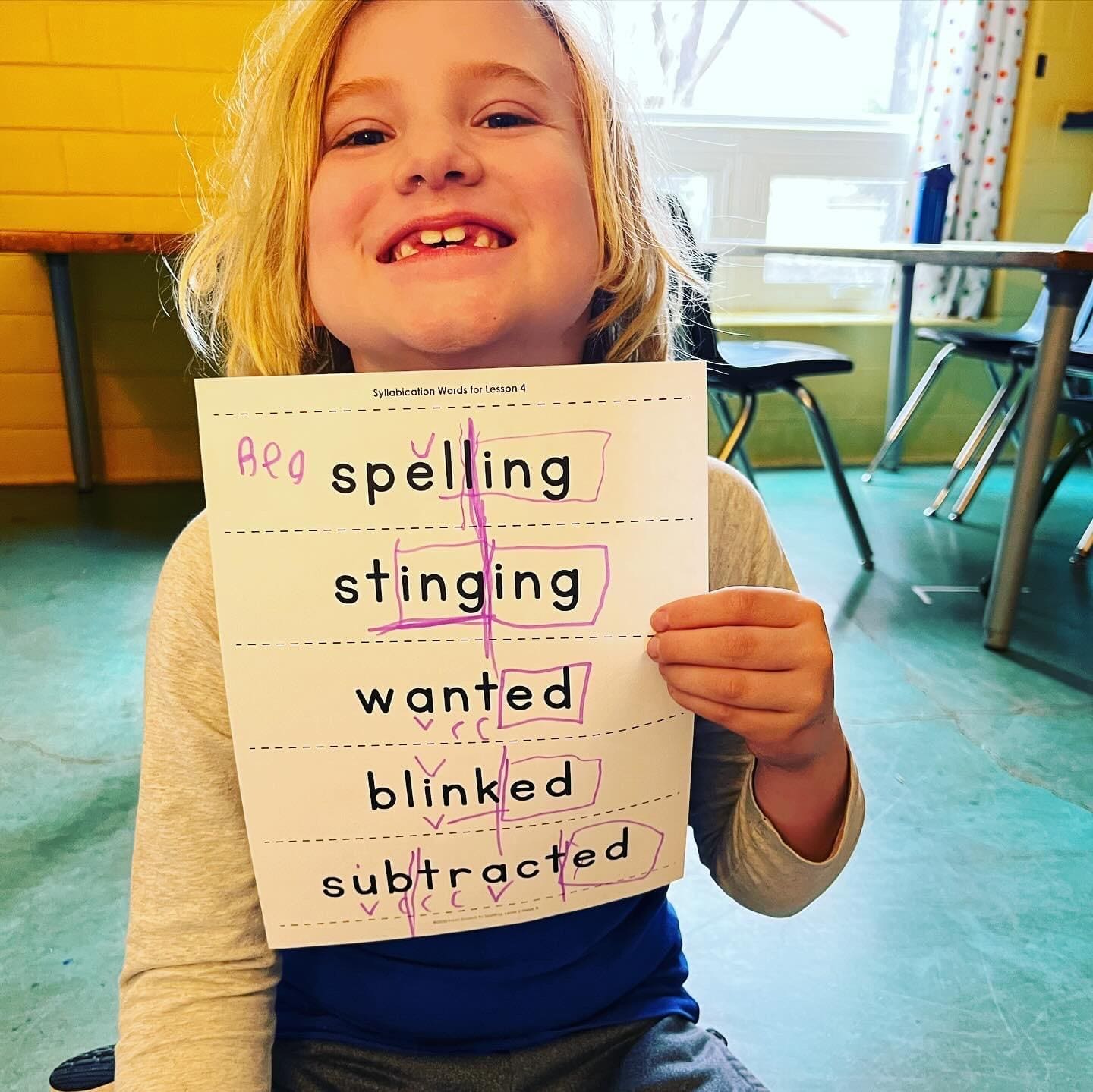
| 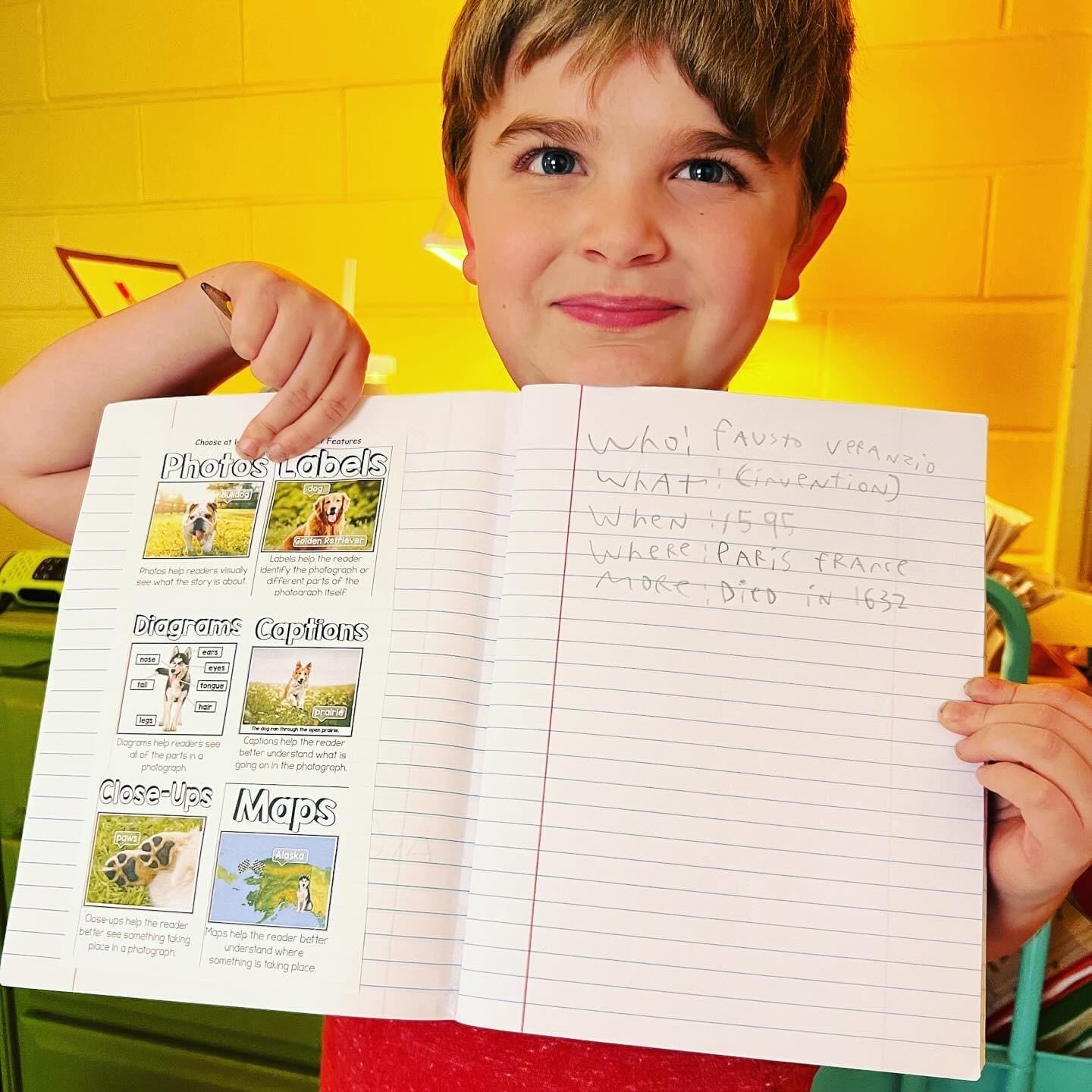
|
|---|---|---|
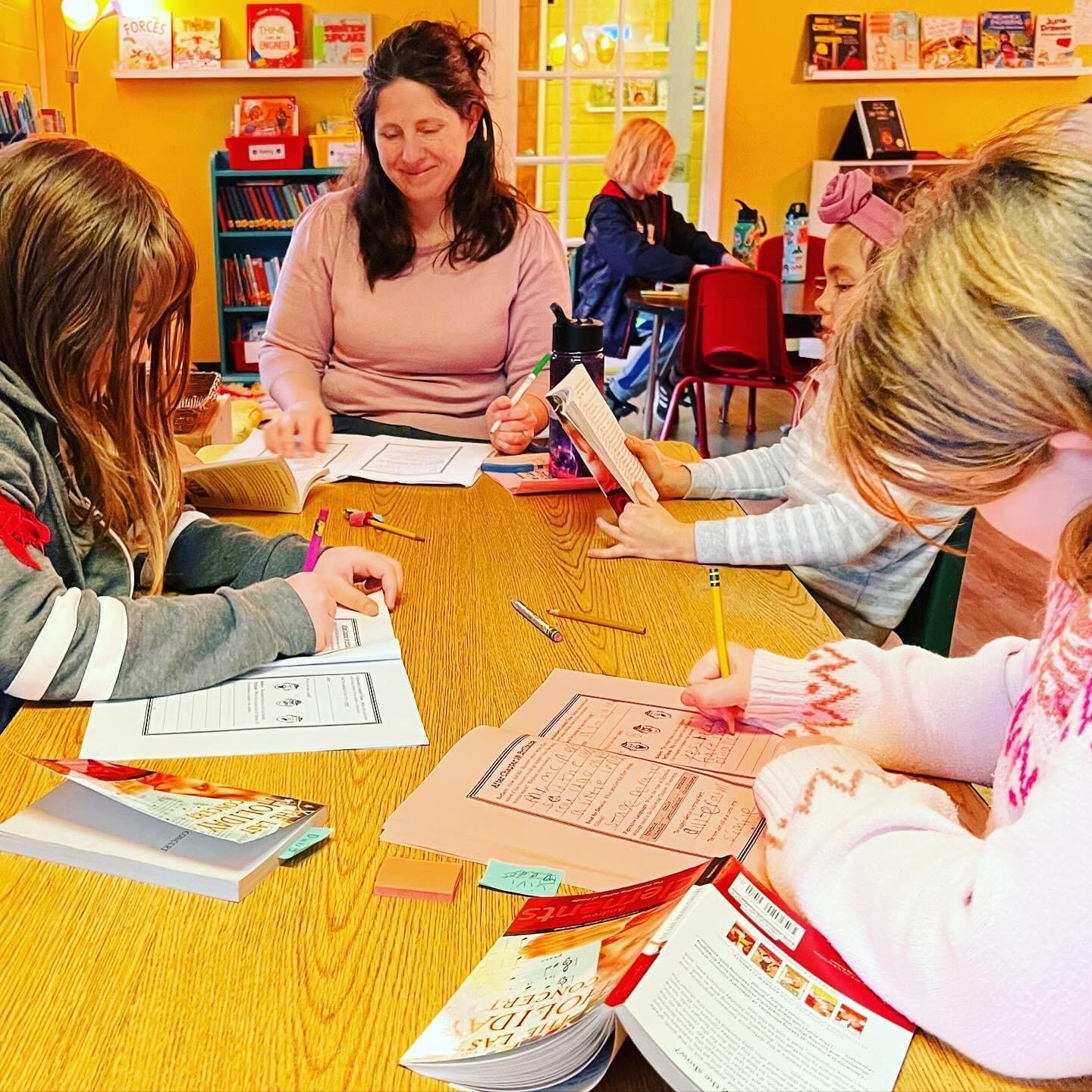
|
|
|
Theme –
After a quick lesson on the third simple machine *The Wedge* we dug through the Legos and finished our cars with wheels and axles and all the cool extras. As promised, we zipped them down a ramp, marking how far each car zoomed! Beo’s went the farthest! On Tuesday we held a quick vote for the most creative Lego car. Kate won by a landslide!
On Tuesday we learned about our 4th simple machine- the screw! A screw is a special kind of inclined plane. It’s basically an inclined plane wrapped around a pole. Screws can be used to lift things or to hold them together. Da Vinci was a big proponent of the many possibilities offered by the screw shape, and he used the shape for many inventions and designs. The “Helical Air Screw” or simply the “airscrew”, was designed to compress air to obtain flight – similar to today’s helicopters. We created a paper helicopter, watched it gently spin to the ground, and had a discussion about what is causing it to spin and why the propellers help it slowly reach the ground.
Our second to last simple machine was a basic pulley. It consists of a wheel on a fixed axle, with a groove along the edges to guide a rope or cable. Effort = the amount of force required to lift or move this object. When you put two or more wheels together, and run a rope around them, you have created a great lifting machine. We took some basic parts (a bobbin, a carabiner, some yarn and a small bucket) and created our own pulley system!
The LAST simple machine was explored on Thursday! An inclined plane is a simple machine with no moving parts. It is simply an even-sloping surface. It makes it easier for us to move objects to higher or lower surfaces than if we lifted the objects directly upwards. We hypothesized on whether the slope of the ramp had any significance to the length a car would zoom. Then we tested it using different slopes and measuring how far the car rolled!




